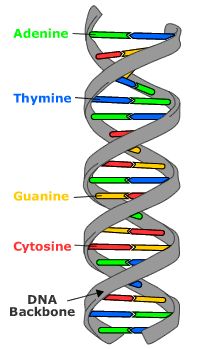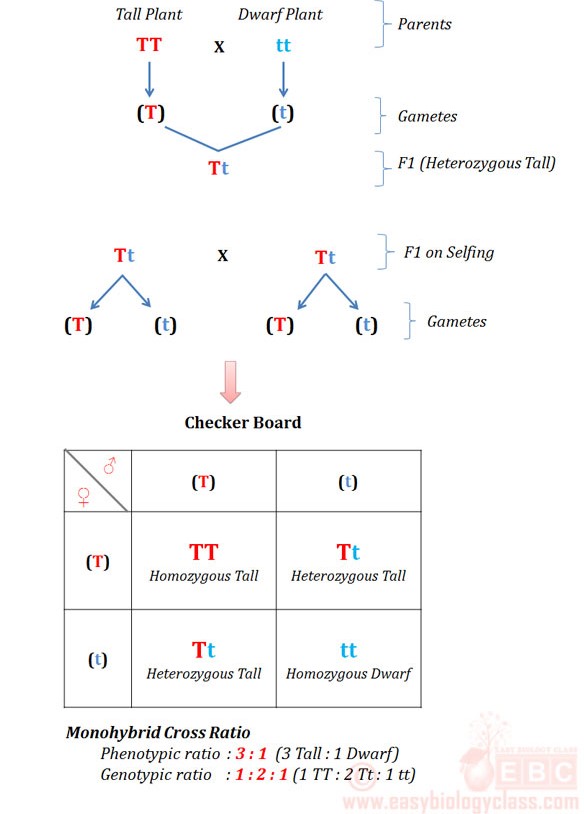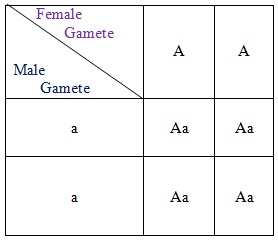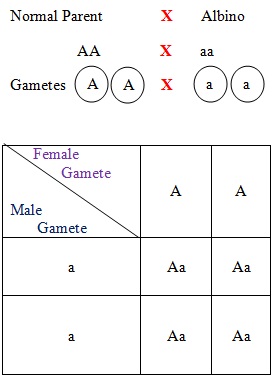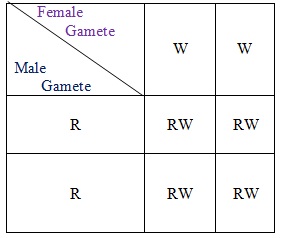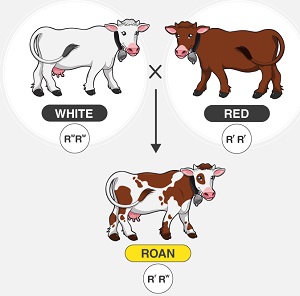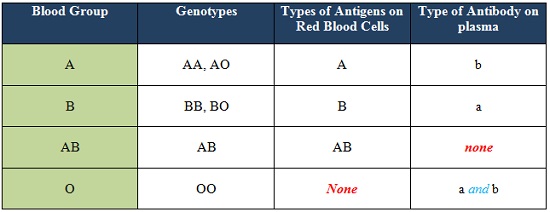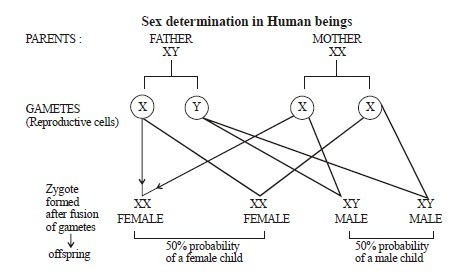- Factors that determine characters (genes) are passed on from parent to offspring through gametes or sex cells.
- In fertilisation the nucleus of the male gamete fuses with the nucleus of the female gamete.
- The offspring show the characteristics of both the male and the female.
- Genetics is the study of how this heritable material operates in individuals and their offspring.
Variations within Plant and Animal Species
Variation
- The term variation means to differ from a standard.
- Genetics also deals with the study of differences between organisms belonging to one species.
- Organisms belonging to higher taxonomic groups e.g. phyla or classes are clearly different.
- Although organisms belonging to the same species are similar, they show a number of differences or variations such that no two organisms are exactly
the same in every respect.
- Even identical twins, though similar in many aspects, are seen to differ if they grow in different environments.
- Their differences are as a result of the environment which modifies the expression of their genetic make-up or genotype.
- The two causes of variations are the genes and the environment.
- Genes determine the character while the environment modifies the expression of that character.
Continuous and Discontinuous Variation
Continuous Variations
- Continuous variations are due to action of many genes e.g. skin complexion in humans.
- In continuous variation, the environment has a modifying effect in that it may enhance or suppress the expressions of the genes.
- Continuous variation can be represented in form of a histogram.
- Example of continuous variation in humans is weight, height and skin complexion.
- In most cases, continuous variation is as a result of the environment.
Discontinuous Variations
- These are distinct and clear cut differences within a species.
-Examples include:
- Ability to roll the tongue.
- An individual can either roll the tongue or not.
- Ability to taste phenylthiourea (PTC); some individuals can taste this chemical others cannot.
- Blood groups - and individual has one of the four blood groups A, B AB or O.
- Albinism - one is either an albino or not.
- Discontinuous variations is determined by the action of a single gene present in an individual.
Structure and Properties of Chromosomes
- These are threadlike structures found in the nucleus.
- They are normally very thin and coiled and are not easily visible unless the cell is dividing.
- When a cell is about to divide, the chromosomes uncoil and thicken.
- Their structure, number and behaviour is clearly observed during the process of cell division.
- The number of chromosomes is the same in all the body cells of an organism.
- In the body cells, the chromosomes are found in pairs.
- Each pair is made up of two identical chromosomes that make up a homologous pair.
- However sex chromosomes in human male are an exception in that the Y chromosome is smaller.
Number of Chromosomes
Diploid Number (2n)
- These are threadlike structures found in the nucleus.
- This is the number of chromosomes found in somatic cells.
- For example, in human 2n = 46 or 22 pairs (44 chromosomes) are known as
autosomes (body chromosomes")
- 1 pair is known as the sex chromosomes.
- In Drosophila melanogaster (species of fly in the family Drosophilidae. The species is known generally as the common fruit fly or vinegar fly), 2n = 8.
Chromosome Structure
- All chromosomes are not of the same size or shape.
- In human beings; each of the twenty three pairs have unique size and structure.
- On this basis they have been numbered 1 to 23.
- The sex chromosomes form the 23rd pair.
Properties of Chromosomes
- Chromosomes are very long and thin.
- They are greatly and loosely coiled and fit within the nucleus.
- During cell division they shorten, become thicker and are easily observable. Each consists of two chromatids.
The two chromatids are held at same position along the length, at the centromere. Chromatids separate during cell division in mitosis and in the second stage of meiosis.
- Chromosomes take most dyes and stain darker than any other part of the
cell. This property has earned them the name "chromatin material."
- Each chromosome is made up of the following components:
- Deoxyribonucleic acid (DNA) - this carries the genes.
It is the major component of the genetic material.
- Protein e.g. histones.
- Ribonucleic acid (RNA) is present in very small amounts.
- Enzymes concerned with DNA and RNA replication - these are DNA and RNA
polymerases and ligases.
Structure of DNA
- DNA was shown to be a double helix that coils around itself.
- The two strands are parallel and the distance between the two is constant.
Components of DNA
- DNA is made up of repeating units called nucleotides.
- Each nucleotide is composed of;
- A five-carbon sugar (deoxyribose).
- Phosphate molecule.
- Nitrogenous base, four types are available i.e,
- Adenine - (A)
- Guanine - (G)
- Cytosine - (C)
- Thymine - (T)
- The sugar alternates with the phosphate, and the two form the backbone of the strands.
- The bases combine in a specific manner, such that Adenine pairs with Thymine and Guanine pairs with Cytosine.
- The bases are held together by hydrogen bonds. A gene is the basic unit of inheritance consisting of a number of bases in linear sequence on the DNA.
- Genes exert their effect through protein synthesis.
- The sequence of bases that make up a gene determine the arrangement of amino acids to make a particular protein.
- The types of proteins an organism manufactures determines its characteristics.
- For example, albinism is due to failure of the cells of an organism to synthesise the enzyme tyrosine required for the formation of the pigment melanin.
The two chromatids are held at same position along the length, at the centromere. Chromatids separate during cell division in mitosis and in the second stage of meiosis.
- Deoxyribonucleic acid (DNA) - this carries the genes. It is the major component of the genetic material.
- Protein e.g. histones.
- Ribonucleic acid (RNA) is present in very small amounts.
- Enzymes concerned with DNA and RNA replication - these are DNA and RNA polymerases and ligases.
- Adenine - (A)
- Guanine - (G)
- Cytosine - (C)
- Thymine - (T)
